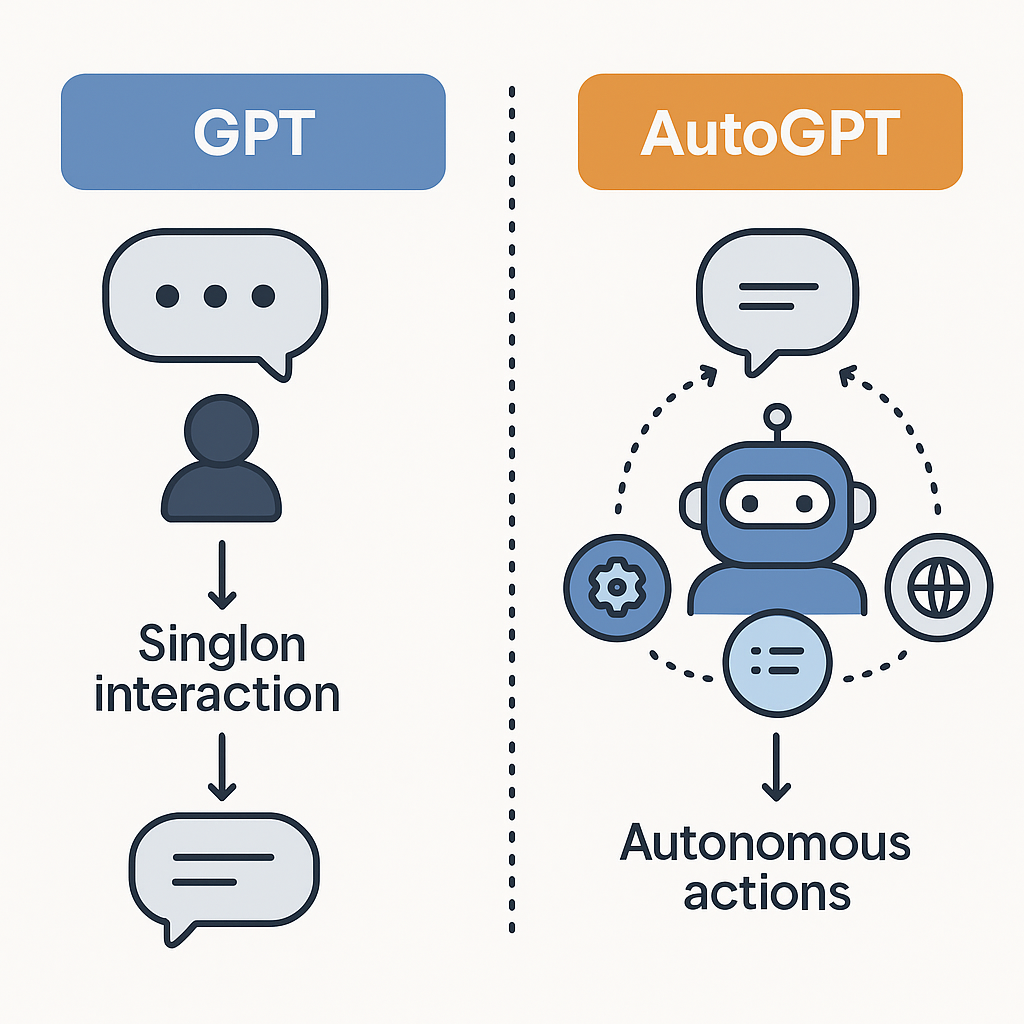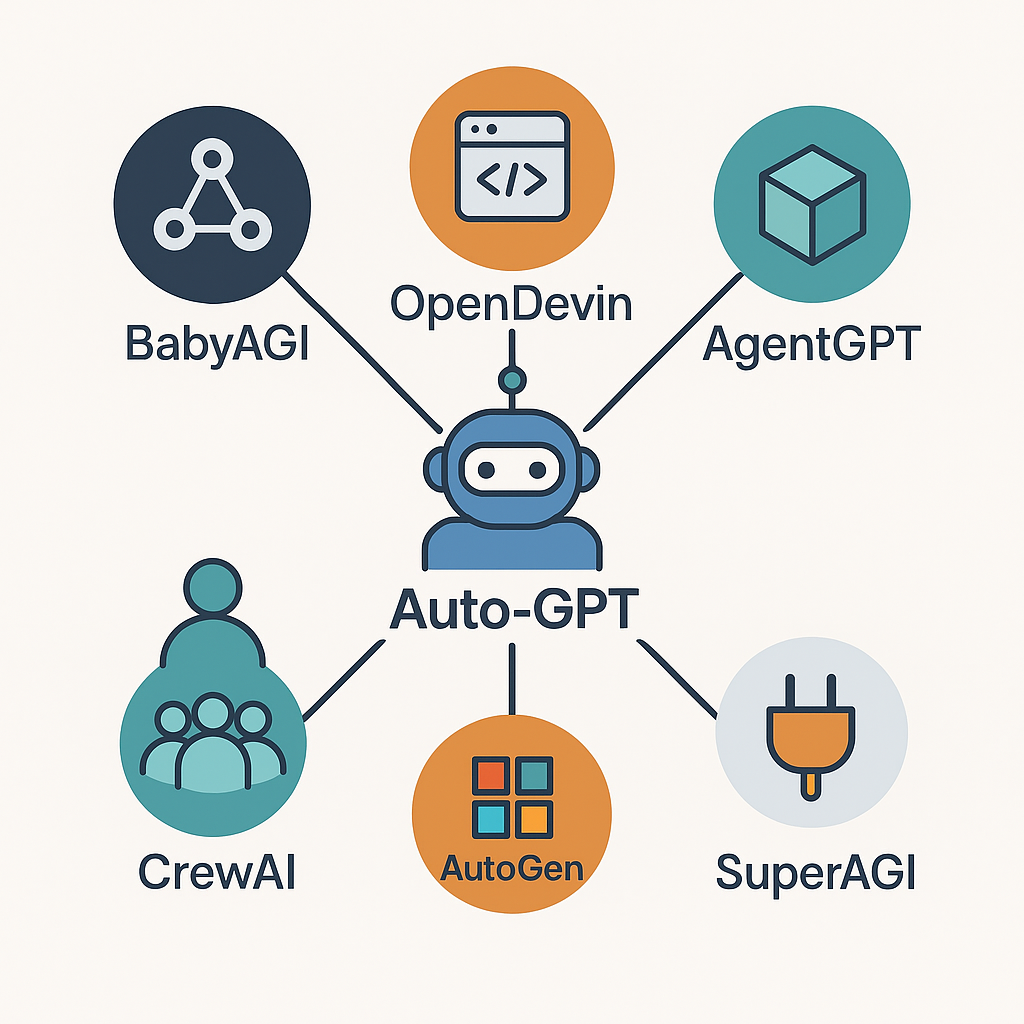AutoGPT: The Dawn of Autonomy | 매거진에 참여하세요
AutoGPT: The Dawn of Autonomy
#autogpt #concept #definition #project #oss #agent #autonomy
What If GPT Could Think and Work on Its Own?
In 2023, an open-source project quietly landed on GitHub.
It was called AutoGPT—and what started as a curious experiment quickly stunned developers, businesses, and the media around the world.
This wasn’t just another chatbot. AutoGPT could think, plan, and act—all by itself.
You could simply tell it, “Write a market research report,” and it would:
- Search the web
- Compile information
- Summarize insights
- Save it all into a file
...and repeat this loop without any further instructions from you.
AutoGPT marked the first mainstream emergence of a new kind of AI:
the autonomous agent. It wasn’t just a tool—it was something you could delegate real work to.
What Exactly Is AutoGPT?
At its core, AutoGPT is an open-source framework that uses large language models (LLMs)
like GPT-3.5 or GPT-4. But unlike traditional AI chat tools,

AutoGPT operates independently to achieve long-term goals.
Here’s what makes it different:
Traditional GPT | AutoGPT |
|---|---|
One-time question/answer | Iterative execution toward a goal |
User-driven interaction | Self-directed planning and execution |
Text generation | Real-world actions: file I/O, APIs, web search |
How it works in practice:
- Goal input: “Create a SaaS market analysis report”
- Plan generation: “Gather info → Compare competitors → Summarize → Output”
- Execution: Web search → File saving → Analyze progress
- Feedback loop: If unsatisfied, fetch more data
- Repeat until goal is complete
The result? A GPT that doesn't just answer—but acts like a self-managing digital assistant.
What Can AutoGPT Actually Do?
While still early-stage, AutoGPT has already demonstrated potential in a variety of use cases:
Market Research Automation
- Scrapes and compiles industry data from the web
- Summarizes findings into digestible documents
- Outputs competitor comparison tables
Email Marketing Automation
- Generates targeted email copy
- Creates multiple A/B test variants
- Formats outputs in HTML
Code Analysis and Debugging
- Parses and improves existing code
- Fixes syntax issues
- Auto-generates unit tests
AutoGPT can also handle tasks like travel planning, résumé writing, book summarization, or even investor research
—if you can explain it, it can probably try it.
Under the Hood: How AutoGPT Works
AutoGPT isn’t just Python scripts stitched together—it’s a thoughtfully architected stack:
- Language Model (GPT-4 or GPT-3.5):
Central brain for decision-making and natural language processing- Memory System:
Stores context and past actions (via tools like Pinecone, Redis, or ChromaDB)- Tool Integrations:
Handles real-world actions: saving files, querying APIs, performing web searches- Autonomous Reasoning Loop:
Evaluates results, adjusts the plan, and decides what to do next
Together, these elements make AutoGPT feel less like a chatbot and more like an intelligent agent with executable logic.
Not Quite Perfect: The Limitations of AutoGPT
For all its promise, AutoGPT still has notable constraints:
Challenge | Description |
|---|---|
Speed | Each task requires multiple GPT calls → slow execution |
Cost | GPT-4 API calls can get expensive fast |
Loop Risk | When decision-making fails, it may enter endless task loops |
Security | File deletion and browser automation pose potential risks |
In short, AutoGPT is still more of a research toy than a fully deployable business tool. But it’s already inspiring a new class of AI projects.
Beyond AutoGPT: The Open-Source Agent Ecosystem Is Growing Fast
The shockwave from AutoGPT’s launch sparked a surge of new open-source autonomous agent projects. Here are some of the most notable:

Project | Description | GitHub Link |
|---|---|---|
Auto-GPT | The original goal-based agent | |
OpenDevin | Open-source version of Devin with coding IDE | |
BabyAGI | Minimal task-based agent loop | |
AgentGPT | Visual agent builder in the browser | |
CrewAI | Role-based collaborative agent framework | |
SuperAGI | Dashboard-ready with plugin support | |
AutoGen (Microsoft) | Sophisticated agent collaboration framework |
Each of these projects explores a different angle—but they all share one goal: to make
GPT not just a tool, but an active participant in completing work.
We're Entering an Era Where AI Can Be Assigned Work
AutoGPT raised a profound question:
What if GPT doesn’t just respond—but acts?
If we still see AI as something that merely “answers commands,” then we’re stuck in the past. But if we start treating AI as a colleague
—one that can plan, execute, and adapt—our relationship with technology fundamentally changes.
AutoGPT isn’t perfect yet. But the pace of innovation in the open-source world is staggering.
We might not be far from a future where autonomous agents become co-workers, not just interfaces.
So—why not get involved now?
The next breakthrough might come from your code.






